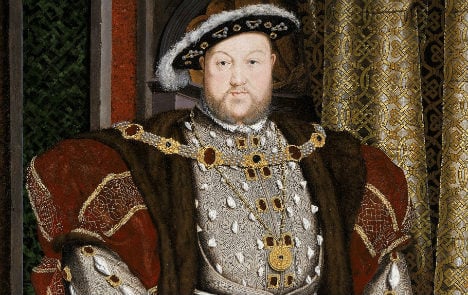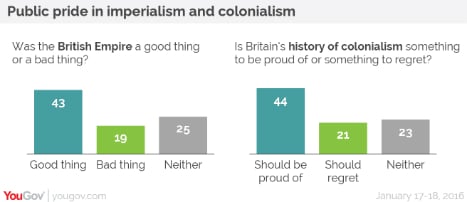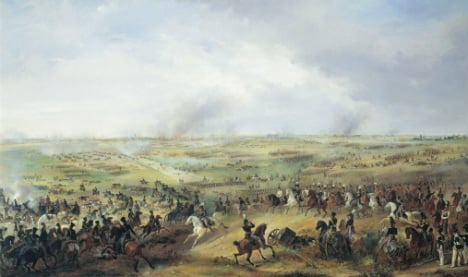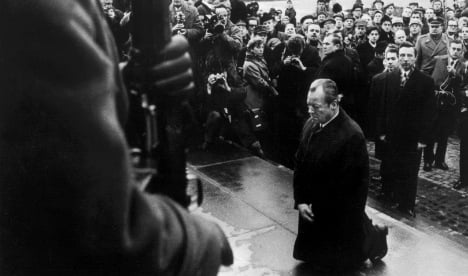On Saturday I made a long-overdue visit to the Topography of Terror permanent exhibit in central Berlin, just a few hundred metres from the glistening modernist towers of Potsdamer Platz.
There, where the Gestapo and SS headquarters once stood, I joined groups of awed schoolchildren, sombre lone adults and chattering foreign tourists in following the story of the Nazis' persecution of the Jews, Roma and Sinti, political opponents, homosexuals, the disabled and conquered populations.
The quiet groups of schoolchildren were particularly impressive.
Standing before the photos of the men who led their great-grandparents to genocidal war, they were silent and attentive as the guides explained the unfolding of the 20th Century's greatest horror, and clapped politely when they were finished.
To my shame, I can't think of a single moment in my upbringing when I was asked to confront my own country's recent history in the same way.
Merry old England
History teaching in British schools is enormously restricted in scope, and up to the age of 16 I remember learning about two subjects above all else: the Tudors and Nazi Germany.
I'm sure we touched on other subjects – I have vague memories of some stuff about the Liberal governments of the early 20th Century and the First World War – but by and large it was hooray for head-chopping Henry VIII and gosh-weren't-those-Germans-awful.
 I'll be happy if I never read the name “Henry VIII” again in my entire life after a British history education. Image: Wikimedia Commons
I'll be happy if I never read the name “Henry VIII” again in my entire life after a British history education. Image: Wikimedia Commons
But as the polls last week show, there's plenty about the history of our own country that is simply never addressed, either in school or in public life.
 Poll results showing British attitudes to colonialism and the Empire. Graphic: YouGov
Poll results showing British attitudes to colonialism and the Empire. Graphic: YouGov
Many would say that any crimes committed in the name of British colonialism seem to pale in comparison to the horror of the Holocaust.
It wasn't until much later in life that I learned about events like the Bengal famine, the Mau Mau rebellion, the British concentration camps in the Boer War, the Battle of Omdurman or the Amritsar Massacre, to name only a few.
SEE ALSO: Germany's 'other genocide' in Namibia
And that's in part because I actively chose to study modules focusing on post-colonial literature while at university.
While the Peace Process was going on during my childhood and early teens, I had no idea why the Irishmen on television were so angry – and I was never illuminated on the subject at school or, really, by the news.
Apart from that, my main Empire-related memory is of people being sad that we had to give Hong Kong back to China in 1997.
Silence doesn't help anyone
So most young Brits are left with a patchwork of jingoistic impressions of the Empire cobbled together from bronze equestrian statues around Trafalgar Square, the movie Zulu and sidelong references in Arthur Conan Doyle and Agatha Christie stories.
Many of us have living relatives who could tell us something about it – my own grandfathers were posted all over the world for the RAF in the 1950s and 60s, and my parents trailed along after them – but it somehow rarely comes up.
When it's mentioned in public life, there seems to be an injunction that one has to acknowledge some notional “benefit” that Britain imparted to the peoples under her rule – and then the conversation is closed.
Our current Prime Minister, David Cameron, said in 2013 that the British Empire should be “celebrated” and called British rule of India a “net help”.
 Indian and Pakistani soldiers shake hands at the border in 2006. File photo: DPA
Indian and Pakistani soldiers shake hands at the border in 2006. File photo: DPA
But he uttered those words during a visit to India, where our main legacy is the partitioning of the subcontinent into two nuclear-armed nations that engage in regular artillery duels.
Our failure to learn about the British Empire isn't just a failure to acknowledge the suffering we inflicted – by accident, negligence or design – on other nations in the past.
It's a failure to provide British citizens with the tools they need to understand the world that their forebears had such a hand in shaping.
That's shameful when Britain could be turning out young people with a uniquely well-rounded understanding of the world – just by studying our own nation's history.
Guided by the past
Germany's deep commitment to Europe – expressed in Article 23 of its Constitution and almost every major speech by political leaders – has often been mocked, especially in the UK, as the country's self-abasement in a bid to atone for the past.
At the crossroads of Europe, Germany was racked by invasion from North, South, East and West, plague, religious strife, and dynastic power struggles between its warring princedoms, separately or all at once.
France and other countries suffered their share of horrors, too – while Britain was largely spared thanks to its island geography.
It's a deep consciousness of that brutal history that has informed Germans' and other nations' determination to work together.
 A painting of the Battle of Leipzig or “Battle of the Nations” in 1813 – the largest battle in Europe before the First World War. Image: Wikimedia Commons
A painting of the Battle of Leipzig or “Battle of the Nations” in 1813 – the largest battle in Europe before the First World War. Image: Wikimedia Commons
Germans spent decades following the war examining their past – going well back before the war – debating what went wrong and what implications that should have for their future behaviour – in a process known as Vergangenheitsbewältigung (dealing with the past).
There were arguments over whether the Holocaust could only have happened in Germany due to its history and what the failures of thought and political leadership were that enabled it in the decades and centuries before.
It's a process that is far from complete – as is all too clear today from the persistence of racism and neo-Nazism in German society – but which continues to be the site of at times heated public discussion.
By contrast, Britain blunders blithely on guided by a conviction that we always have been and always will be the good guys – and that everyone else shares that view.
That's been brought to the fore more than ever in Brexit negotiations, where Outers think we can just throw a lever and ratchet up trade with the former Empire to replace whatever we lose with Europe.
They dream of a Britain getting to be unique, aloof, in Europe but not of it, as the nation has always seen itself down the centuries.
But in today's Europe – bound by ties of law, trade, communication and blood that stretch across borders – it's no longer possible to pull up the drawbridge.
Britain needs to come to terms with that, show some humility, and start to learn from the past.



 Please whitelist us to continue reading.
Please whitelist us to continue reading.